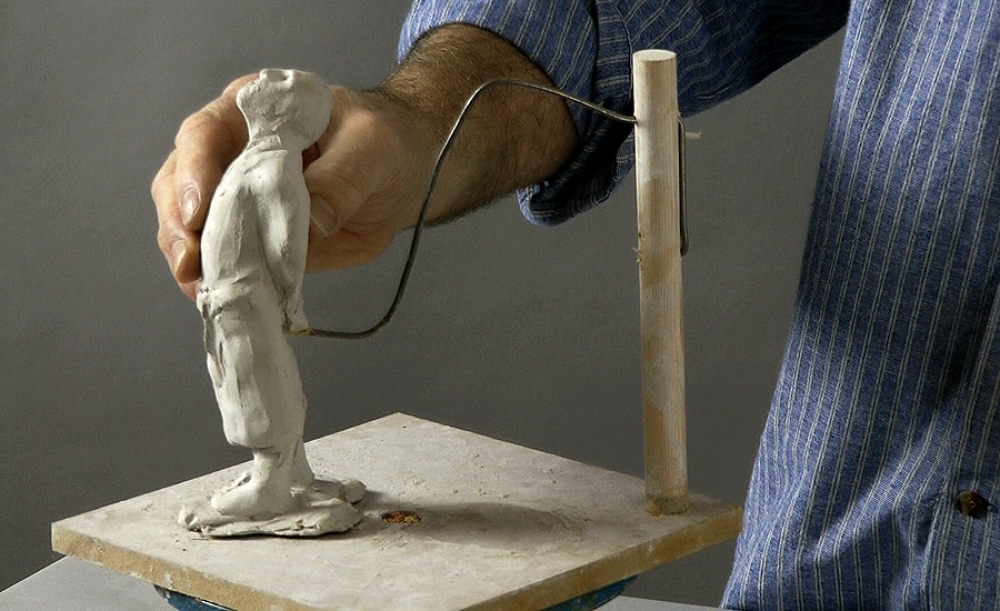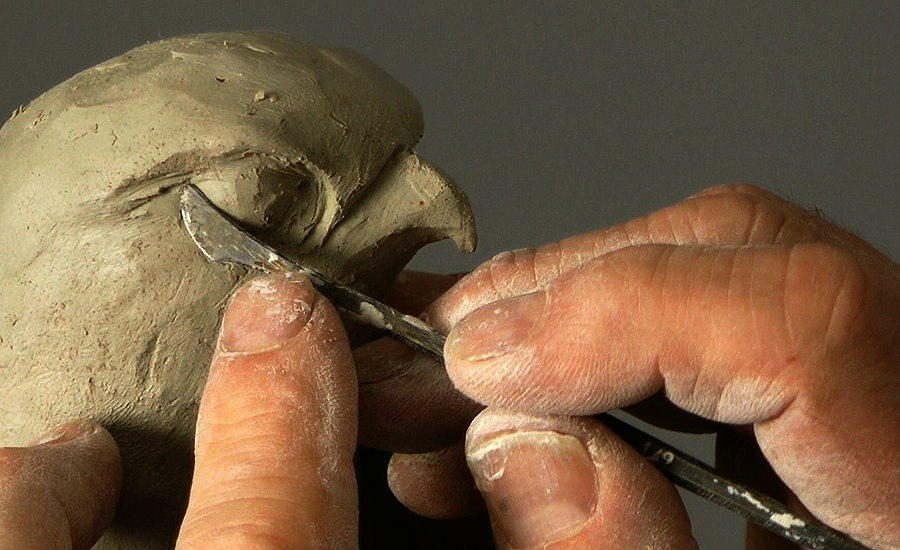What's with the Clay Modelling?
01.01.21

When I suggest to students that they create a model as the first step in a carving, they often blanch.
I’ve even heard them groan: Surely not; that’s extra work and it’ll all take longer. It’s not carving! Isn't it copying? I’m hopeless at modelling! - and pretty bad at art in general…
Almost every carving I undertake involves some preliminary drawing, some sketching or doodling at the very least, and I'm pretty sure this is true for most carvers. You probably do it yourself.
But why are we doing it? Why are we drawing?
Essentially, it’s about information: we don't have enough. We cannot 'see' enough with our mind's eye to guide our hands.So we draw. If we did have enough information, there would be no point, would there? We recognise that drawing helps us towards a better carving, which also means being a better carver.
But sometimes, if I have a particularly complicated carving, drawing just doesn't cut it, doesn't give me enough information. I still can't 'see' the result, cannot visualise the way, just by drawing. And I never start a carving until I can see – or have the 'Good Enough' vision at least. So, it's a model.
But the leap to modelling seems to stun many carvers: it takes longer than drawing, it seems quite difficult, and modelling in clay seems somehow a betrayal of woodcarving ...
For me, modelling in this context has a similar aim to drawing: a better woodcarving.
Here are 8 good reasons for modelling in clay:
1 Pinning down an idea: When you feel comfortable with clay you can catch an inspiration directly, missing out drawing altogether. It's fast, can be 'sketchy', and you can 'rub out and start again'.
2 Exploring an idea three-dimensionally: A drawing has one viewpoint; a model can have them all. You can really get 'inside' your idea.
3 Solving problems: The model lets you study the potential carving from all directions and decide, for example, the best use of grain to strengthen weak parts. You can add, tweak or take away easily and quickly.
4 Measuring wood dimensions: For an initial block, or a glue up - and, in this case, where to site the joints.
5 Initial roughing out: If your model is to scale, you can assess waste wood to bandsaw safely away from the block and, more vitally: what wood to leave!
6 The model functions at all times as an aide-memoire: 'How things work' or relate to each other in the round.
7 Saving time: Modelling (and drawing) always save me carving time in the long run. Repeat: Always. Carving speeds up enormously when I know exactly what I am doing.
8 Gaining confidence: Modelling helps develop a 3-dimensional eye, a sense of 'sculptural form', and understanding of the effects of light and shadow. April 2002
Yes, you say, but isn't modelling 'copying'?
Modelling isn't about copying
Clay models and woodcarvings are different: different tools, medium, processes; this should be reflected in the result. I would never advocate making a model and just copying it in wood.
Remember: I'm talking about you, making a model to help your carving. It's part of, and stage in, your creative process which also includes drawing. See them in the same light.
For me, somewhere about a third of the way into the carving, I find myself paying less and less attention to the model and becoming more absorbed in the carving. The carving has taken over. I then put the model by and might never look at it again until I return it to the mud from whence it came.
Last thoughts:
Relax: Don't be too serious about modelling. Or self-critical. Keep light. Feel free to explore and change your mind. Think about what you are doing as playing, playing with mud. That's not something to give yourself a hard time about.

Related videos:
Do check out these Clay & Clay Modelling workshops that'll give you more practical advice about clay and tools, and start you off modelling.
In the next blog here on Woodcarving Workshops, February 2020, I'll be looking more at drawing and how useful that is for woodcarvers ...
